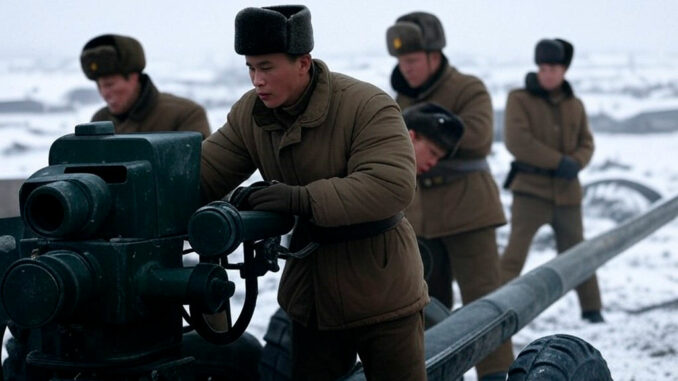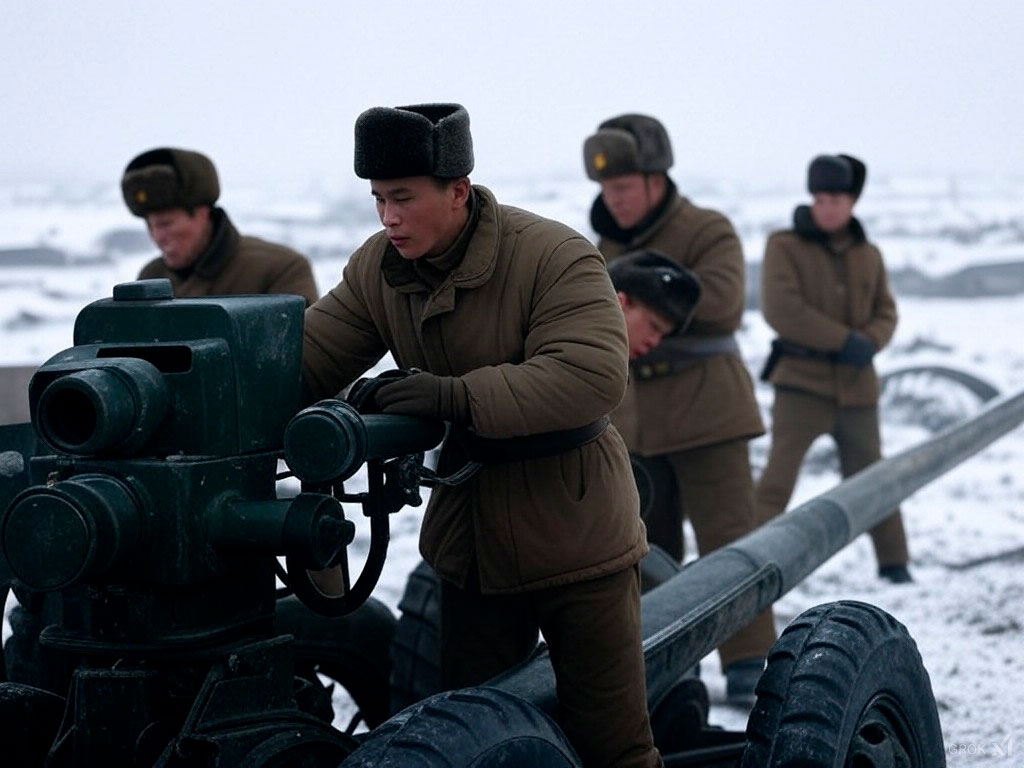
North Korea reinforces Russia with advanced troops and weapons, complicating prospects for peace in the Ukrainian conflict.
Russia is stepping up its military efforts in Ukraine with the support of North Korea. Pyongyang is sending reinforcements consisting of artillery troops and short-range ballistic missiles, boosting Russian offensive capabilities in the Kursk and Bryansk regions. These deployments include systems such as the Koksan 170 mm and MLRS M-1991 240 mm, capable of striking at distances of up to 60 kilometers. The implications are far-reaching: increased casualties, greater pressure on Ukrainian defenses, and more complex peace negotiations.
Strategic military reinforcements
North Korea is sending troops to Russia specialized in artillery and short-range ballistic missiles. The units deployed include operators of heavy artillery systems such as the Koksan M1989 and M-1991 MLRS. These weapons, used on the Ukrainian front, complement Russia’s long-range artillery capabilities.
- The Koksan 170 mm has a maximum range of 60 kilometers with rocket-assisted shells, outclassing many equivalent systems.
- The M-1991 multiple rocket launchers use 90 kg explosive warheads, with incendiary and chemical capabilities.
These systems are crucial for maintaining constant pressure on Ukrainian positions, particularly in the Kursk region, where they support ground offensives.
Pyongyang has also sent 150 KN-23 ballistic missiles, bolstering Russia’s strategic firing capabilities. These weapons, derived from Russian Iskander missile technology, are renowned for their in-flight maneuverability and range of 500 kilometers.
Consequences for Ukraine
North Korean reinforcements exacerbate military challenges for Ukraine. North Korean troop tactics include massive human wave assaults, where groups of 40 soldiers advance under intense fire, often without armored support. Although their effectiveness is reduced by doctrinal and linguistic differences, their sheer numbers force the Ukrainian forces to mobilize more resources.
To date, some 12,000 North Korean troops have been deployed in Russia, a third of whom have reportedly been killed. However, this mobilization is fueling a strategy of war of attrition, aimed at wearing down Ukrainian defenses. Ukrainian forces report intensified fighting in the Pokrovsk and Chasiv Yar regions, where the North Korean presence is confirmed.

An expanding arsenal
Over the past three months, North Korea has delivered around 120 Koksan artillery systems and as many M-1991 MLRS. This equipment fills the gap in Russian ammunition supplies.
The Koksan M1989, although relatively old, are ideal for long-range strikes. Each unit has 12 shells in internal storage, which limits its autonomy but enhances its initial impact on the battlefield.
The M-1991, on the other hand, offer operational flexibility thanks to their 22 launch tubes and their ability to deploy a variety of munitions, from explosive warheads to chemical projectiles.
Geopolitical implications
North Korea’s growing involvement in the Ukrainian conflict reflects a strategic alignment with Russia. This cooperation takes place in a context where Pyongyang is seeking to strengthen its international influence while obtaining economic and technological support from Moscow.
North Korean arms exports, once a major source of revenue, are once again becoming relevant in this conflict. According to estimates, North Korea could generate 1 to 2 billion euros from these arms transfers, offsetting international sanctions.
For Russia, these reinforcements compensate for the massive losses suffered since the start of the war. Since February 2022, some 1 million Russian soldiers have been killed or wounded, according to recent statements.
Challenges for peace negotiations
North Korean reinforcements complicate the prospects for a diplomatic resolution to the conflict. Vladimir Putin recently asserted that any peace agreement would have to take account of the interests of all parties involved, including those of the occupied regions. However, the intensification of hostilities makes a rapid end to the fighting unlikely.
The United States, for its part, is considering stepping up sanctions against countries supporting Russia, notably Iran, North Korea and potentially China. These measures are intended to limit Moscow’s ability to continue the conflict.
War Wings Daily is an independant magazine.